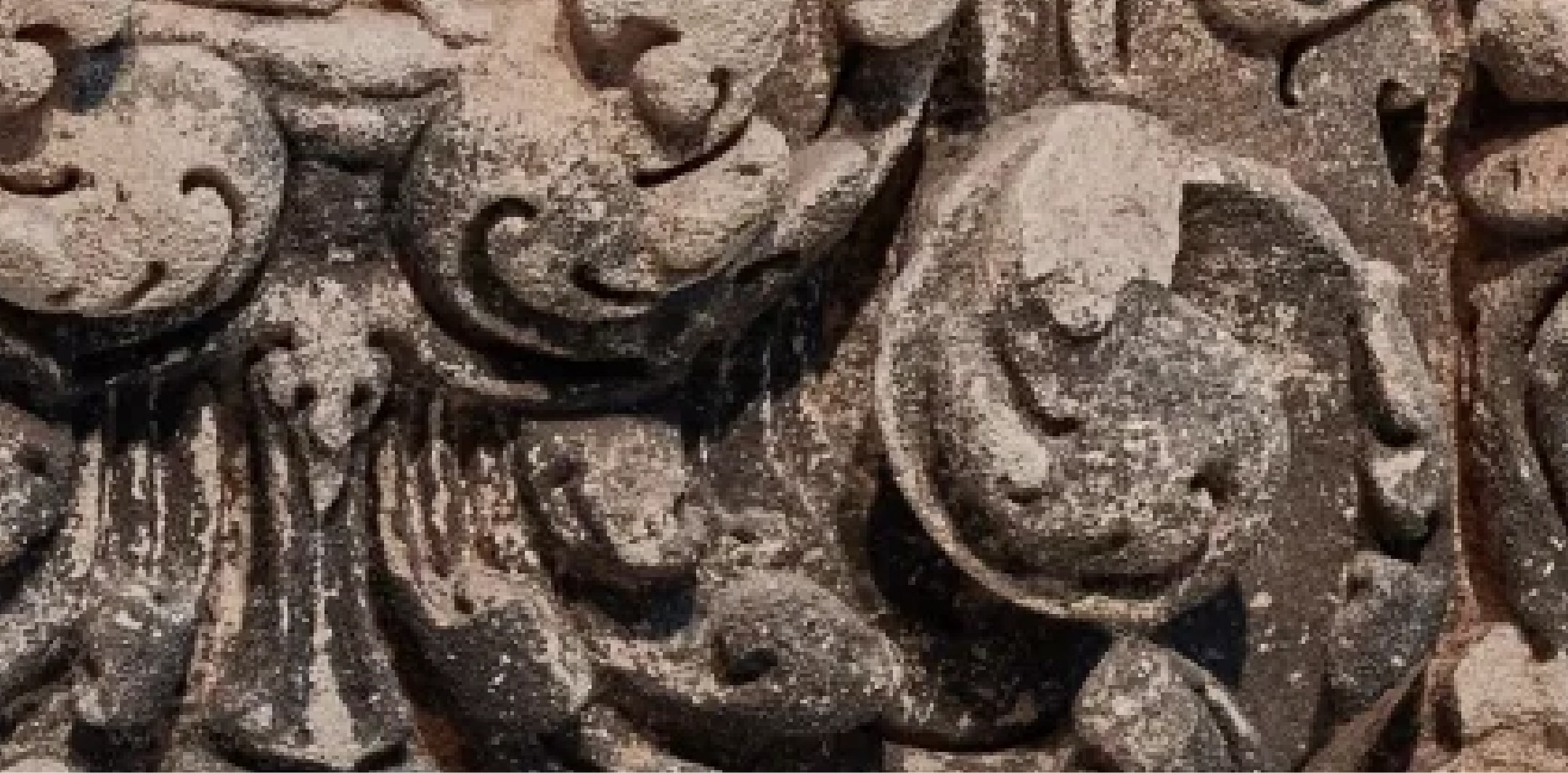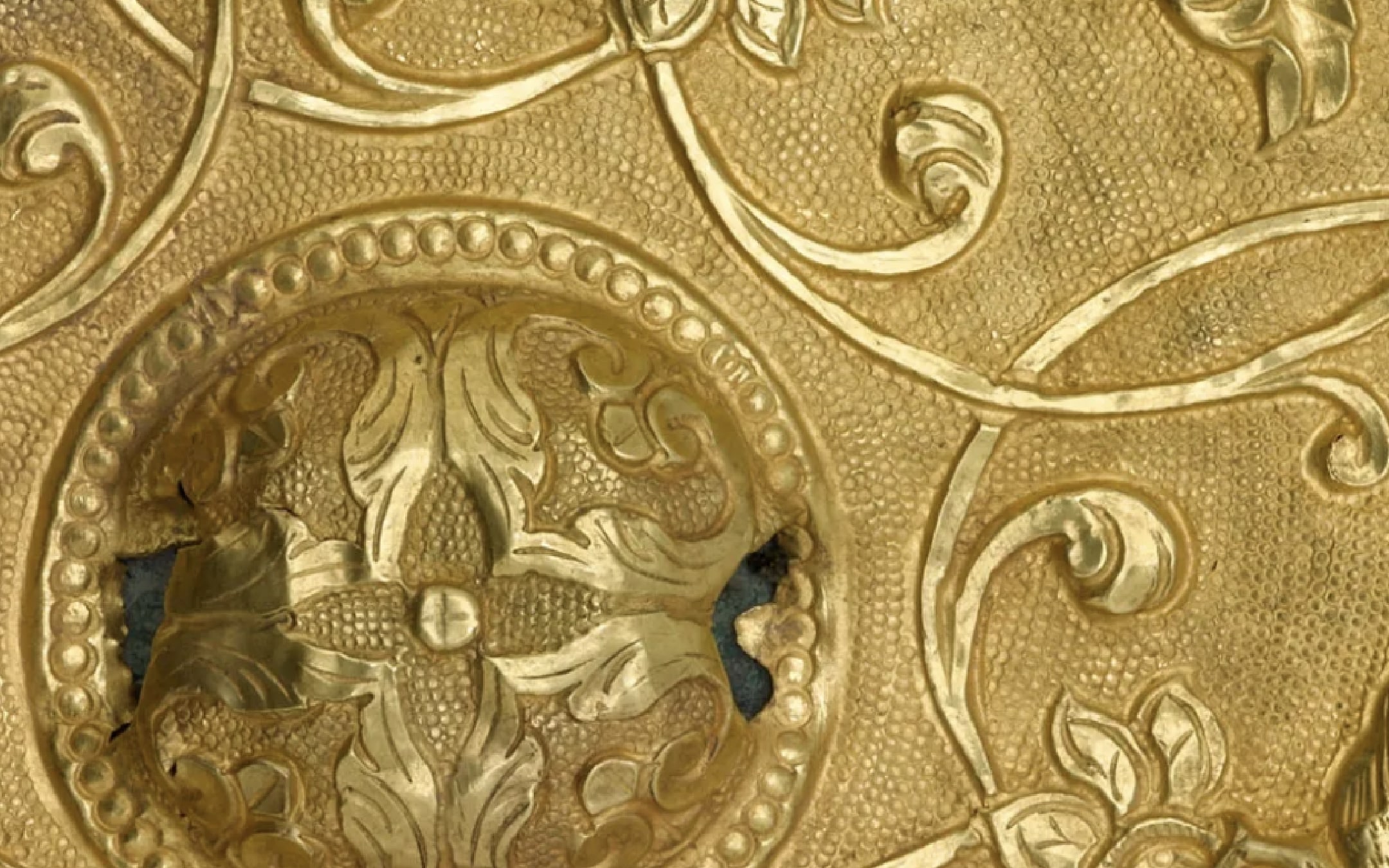Fragments with dragon interlace

Terms of Use
Usage Conditions ApplyAt A Glance
-
Period
6th-5th century BCE -
Geography
Probably Henan province, China -
Material
Gold foil -
Dimension
H x W (largest): 18 x 13 cm (7 1/16 x 5 1/8 in) -
Accession Number
S2012.9.2593a-u -
EDAN ID
edanmdm:fsg_S2012.9.2593a-u
Object Details
-
Provenance
To 1959Abel William Bahr (1877-1959), Ridgefield, Connecticut [1]From 1959 to 1960Edna H. Bahr (d. 1978), by descent from her father, Abel William Bahr[2]From 1960 to 1997Paul Singer (1904-1997), Summit, New Jersey, purchased from Edna H. Bahr in 1960 [3]From 1997Arthur M. Sackler Gallery, bequeathed by Paul Singer [4]Notes:[1] Paul Singer’s acquisition of these fragments of gold foil ornamentations from Edna Bahr, the daughter of Abel W. Bahr, was mentioned in Singer’s correspondence with Henry Trubner and Zheng Dekun, see letter from Trubner to Singer, dated June 21, 1960 and letter from Zheng Dekun to Singer, dated 24 July, 1960, Paul Singer Papers, Freer Gallery of Art and Arthur M. Sackler Gallery Archives. The collector Abel W. Bahr was born in Shanghai and lived in China until about 1911, when he moved first to London, then to New York, Montreal, and eventually Ridgefield, Connecticut.[2] See note 1.[3] See note 1. Singer discussed the circumstances of the fragments’ acquisition from the Bahr collection in his memoirs completed in February 1993, see Paul Singer, “Reminiscences of a Transient Custodian,” ms., Paul Singer Papers, Freer Gallery of Art and Arthur M. Sackler Gallery Archives, p. 106-108. The fragments were reproduced in a catalogue of the exhibition organized by Paul Singer in 1972, see Early Chinese Gold and Silver (New York: China Institute in America, 1972), cat. 5 (ill.). The collection of Chinese art and antiquities assembled by Paul Singer over time was purchased by him on behalf of Dr. Arthur M. Sackler, Jillian Sackler, The Arthur M. Sackler Foundation, the AMS Foundation for the Arts, Sciences and Humanities and later was transferred to the children of Dr. Arthur M. Sackler.[4] Upon Paul Singer’s death in January 1997, his collection was transferred to the Arthur M. Sackler Gallery by order of the Executors of the Estate under a loan agreement signed on February 1997. Shortly thereafter, the Sackler Gallery was vested with full ownership and title to the collection in full agreement by the Sackler Foundations and Sackler family members. The formal accession of the Singer collection was completed in 2012. -
Collection
Arthur M. Sackler Collection -
Exhibition History
One Man’s Search for Ancient China: The Paul Singer Collection (January 19 to July 7, 2013) -
Previous custodian or owner
Abel William Bahr (1877-1959)Edna H. Bahr (1907-1986)Dr. Paul Singer (1904-1997) -
Origin
Probably Henan province, China -
Credit Line
The Dr. Paul Singer Collection of Chinese Art of the Arthur M. Sackler Gallery, Smithsonian Institution; a joint gift of the Arthur M. Sackler Foundation, Paul Singer, the AMS Foundation for the Arts, Sciences, and Humanities, and the Children of Arthur M. Sackler -
Type
Jewelry and Ornament -
Restrictions and Rights
Usage Conditions Apply
There are restrictions for re-using this media. For more information, visit the Smithsonian's Terms of Use page.
The information presented on this website may be revised and updated at any time as ongoing research progresses or as otherwise warranted. Pending any such revisions and updates, information on this site may be incomplete or inaccurate or may contain typographical errors. Neither the Smithsonian nor its regents, officers, employees, or agents make any representations about the accuracy, reliability, completeness, or timeliness of the information on the site. Use this site and the information provided on it subject to your own judgment. The National Museum of Asian Art welcomes information that would augment or clarify the ownership history of objects in their collections.
Keep Exploring
-
Related Resources
-
Date
-
Name
-
Place
-
Topic
-
Culture
-
Object Type

